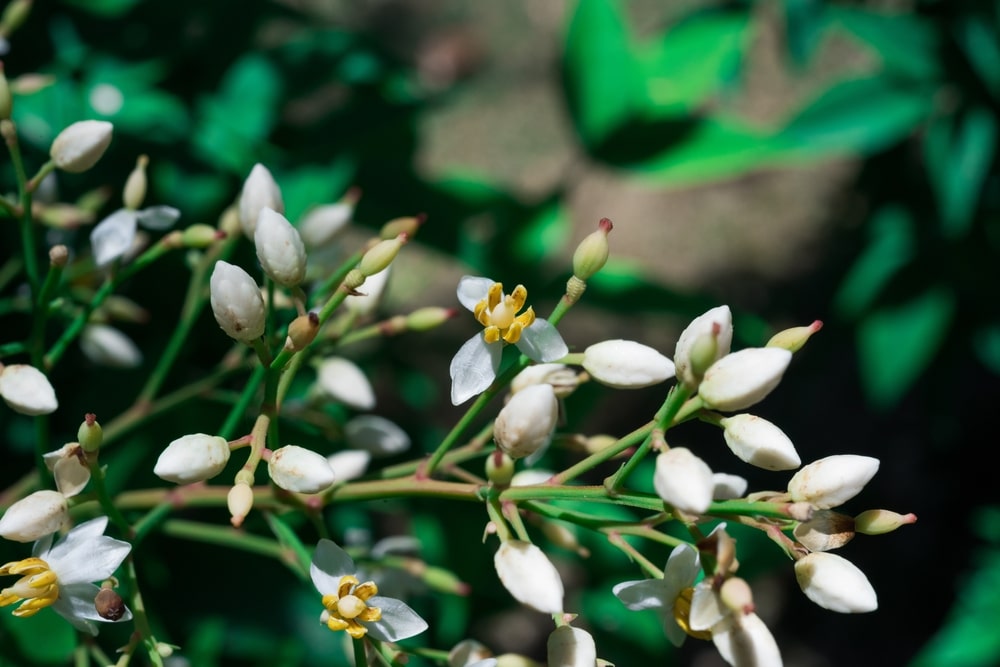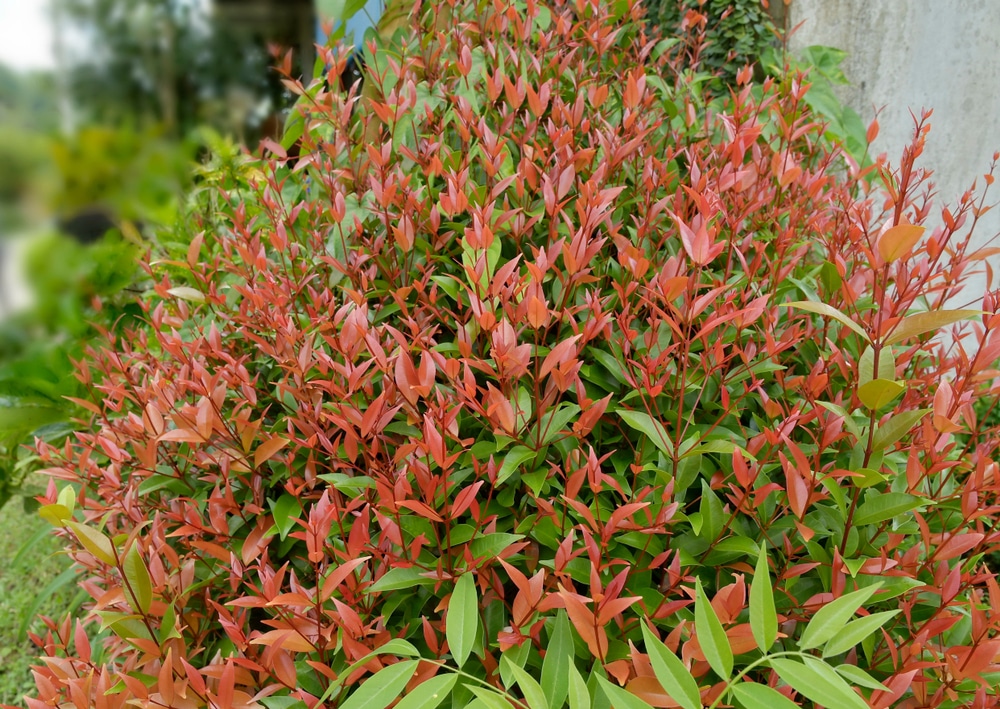The ‘Gulf Stream’ is a dwarf and compact evergreen shrub with leaflets shaped like a lance. The foliage starts red-orange, then green with the same bronze tinge, and finally red or gold in fall and winter.

| Botanical Name | Nandina domestica ‘Gulf Stream’ |
| Common Name | Gulf Stream Nandina, Heavenly Bamboo, Chinese Sacred Bamboo |
| Plant Type | Perennial |
| Flower Color | Small white inflorescence that turns into berries |
| Size When Mature | 36 to 48 inches |
| Bloom Time | Late spring |
| Sun Requirements | Full sun and Partial sun |
| USDA Hardiness Zones | 6 to 9 |
| Soil PH Range | 6.0 to 7.5 |
| Soil Type | Moderate acidity, well-drained and loamy |
| Water Needs | Medium |
| Native Area | China, India, and Japan |
What you Need to Know About Gulf Stream Nandina
Nandina domestica ‘Gulf Stream’ is an upright shrub with rhizomatous spread, and its foliage serves as a highlight in growing the plant in your yard or garden. The leaves emerge pink-red or orange-red and slowly turn to bright green with a light red tinge. In late spring, white inflorescences transform into round red berries that are toxic to pets and humans.
How to Care for the Nandina Gulf Stream
Here’s everything you need to know about growing and caring for a thriving Nandina Gulf Stream.
Light
The evergreen shrub is adaptable to several light environments, including one where it gets full shade. However, its growth and vigor, as well as leaf color won’t be as bright as a specimen that’s planted in full sun.
To get the best landscape color from your Nandina ‘gulf stream’ plant, a location that gets full sun in the morning and afternoon shade is recommended. Keep in mind that partial shade or full shade can cause the shrub to develop leaf spots, especially if the leaves are constantly wet.
The Gulf Stream Nandina only reaches up to 4 feet, or 48 inches in height, and can serve as a natural houseplant indoors. However, it will need a south-facing window or glass door and has to be rotated a quarter-turn each week to get an even growth.
Water and Soil Needs
Just like sunlight requirements, the Chinese Sacred Bamboo is adaptable to a wide variety of soil types. These plants grow best though, in a loamy garden mix that’s slightly acidic and can retain moisture well.
The Nandina Gulf Stream can be planted in the ground come spring or fall or in containers anytime during the year. Young specimens tend to need more water compared to their older counterparts- water your ‘gulf stream’ bush deeply and when the soil is dry to the touch so it can form extensive roots. Remember to water more frequently on hot summer days and if you put them in a porous medium.
Temperature Requirements
Nandina domestica ‘Gulf Stream’ thrives in USDA zones 6 through 9 and is generally tolerant of warmer days than cold ones. Those living in colder climates can still grow the Heavenly Bamboo, albeit in a pot or container so they can overwinter the plant indoors.
Mulching of organic matter about two to three inches deep can help conserve moisture and keep weeds at bay.
Fertilizer
The best fertilizer to use on a Nandina Gulf Stream is a slow-release and balanced fertilizer product three to four times each growing season.
You can begin feeding with a balanced NPK ratio of 10-10-10 in spring and when new growth starts to emerge. In addition, if you see leaf chlorosis then it’s recommended that you feed a single dose of iron chelate or iron sulfate as detailed in the manufacturer’s instructions.
You can feed regular fertilizer up to four times per growing season, or once using a slow-release fertilizer. Make sure to water the ground after broadcasting the compound so it will be soaked and absorbed by your Nandina Gulf Stream’s roots.
Common Diseases
The good news is that the Chinese Sacred Bamboo doesn’t have too many problems in regard to pests and diseases. The plant, however, may experience the occasional spider mite and scale infestations, which can be quickly solved with neem oil spray and commercial product applications.
Nandina ‘Gulf Stream’ Propagation
Propagation of the Nandina domestica ‘Gulf Stream’ is usually done via seed sowing, isolating the suckers, and by stem cuttings.
Mature seeds may be collected in the fall and dried at 40 degrees F. The seeds may be sown in the summer and take about two months to germinate. Suckers growing at the base of the Heavenly Bamboo may be separated from their parent plant and grown as a separate specimen.
To do this, you might need to dig up your ‘Gulf Stream’ Nandina and then remove the suckers, along with their root system, and transfer into another pot or container.
Lastly, you can try to cut off stems around 3 to 5 inches long and plant them in a separate container with a well-draining medium. You’ll have a higher chance of succeeding if you dip the ends in rooting hormone.
Related Article: Drought Tolerant Plants North Texas

